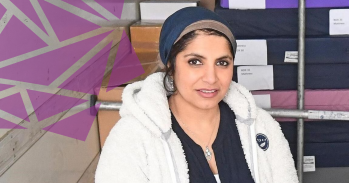
This area was the scene of a major conflict between the British Army and the IRA in 1970. Subsequently, the neighbourhood saw some of the worst violence of the Troubles.
This area was the scene of a major conflict between the British Army and the IRA in 1970. Subsequently, the neighbourhood saw some of the worst violence of the Troubles.
What is it?
This is an image from the archive of ‘Conflict in Cities and the Contested State’ a multi-disciplinary research project funded by the Large Grants programme of the Economic and Social Research Council and based in the Department of Architecture. The photograph depicts the ‘Solidarity Wall’, a Peacewall on Falls Road, Belfast. This area was the scene of a major conflict between the British Army and the IRA in 1970. Subsequently, the neighbourhood saw some of the worst violence of the Troubles.
What is the story?
This wall features murals dedicated to the Basques, Kurds and Palestinians. This particular section is adorned with a mural which shows Palestinian refugee children. One holds a key: the symbol of return. The other looks longingly over the Separation Barrier at Jerusalem. Adjacent to this image is a depiction of the Falls Road ‘son’ Brendan Hughes, an IRA prisoner in the Maze Prison who led the first of the infamous hunger strikes.
Can we see it?
This image forms part of the ‘Capturing Urban Conflicts’ exhibition to be shown at the Department of Architecture as part of the University's 'Festival of Ideas', 19-23 October. ‘Capturing Urban Conflicts’ uses maps and photo-essays to offer a glimpse into the everyday life and built environment of cities that stand at the centre of some of the worlds most protracted conflicts, including: Jerusalem, Belfast, Berlin, Nicosia, Mostar, Beirut, Vukovar, and Brussels. There will be a reception and talk by Principal Investigator Dr. Wendy Pullan on the opening night.
This work is licensed under a Creative Commons Licence. If you use this content on your site please link back to this page.



